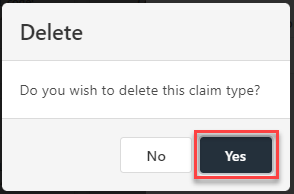Creating and Maintaining Claim Types
Claim Types are created in IRIS Expenses to manage the types of claim that can be selected when an employee is entering the details of expenses, for example, Hotel, Food, Travel, etc. The claim types can be used to determine whether default VAT rates or nominals to which a claim type is to be posted or whether the employee can select the information when entering the claim.
Mileage types are recorded separately to claim types. For more information, see Creating and Maintaining Mileage Types.
You are unable to remove claim types created within the software if claims have been submitted against it but you can hide them when they are no longer required so they are no longer visible for selection when entering a claim.
Claim Types are managed in the Settings for IRIS Expenses.
- select Options, then select Settings.
- The Settings page is displayed. Select Claim Types from the Expenses menu.
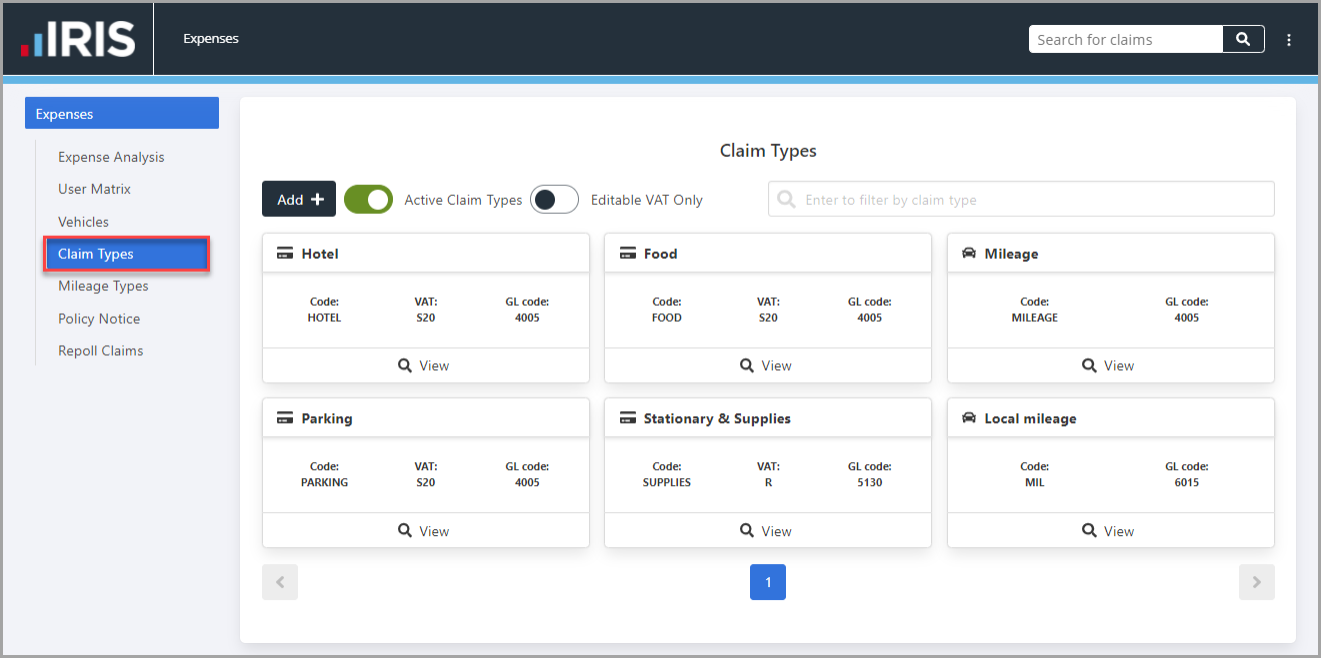
Claim types can also be identified by either a card icon or vehicle icon. In Type on the claim type panel, a Card icon is displayed for Expense claim types and a Vehicle icon is displayed for Mileage claim types.
Adding a Claim Type
For employees to be able to enter the details of a claim for a specific type of expense, a claim type has to be selected. You need to create the claim types employees are going to need when entering details for expenses in IRIS Expenses.
Two types of claim type can be created. Follow the instructions for the claim type to be created:
Creating an Expense Claim Type
Adding Claim Types
- In the Claim Types panel, select Add +.
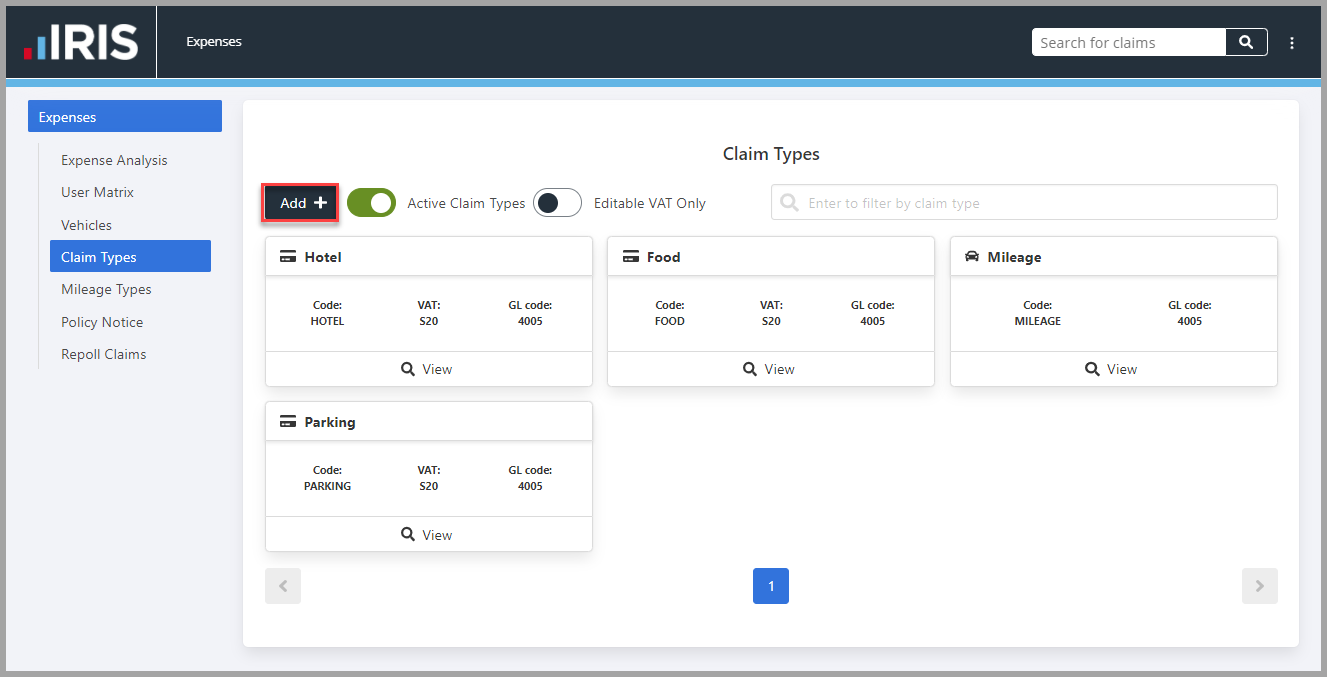
Creating an Expense Claim Type
- The Expense Claim Type panel is displayed. If you are creating a claim type for a mileage claim, select Expense from the drop-down menu. For more information, please see Creating a Mileage Claim Type.

- In the Expense Claim Type panel, enter the details for the claim type for the following:
Code - enter a reference to help identify the claim type (limited to 24 characters) e.g. TRAIN.
Title - enter a title to help identify the claim type (limited to 24 characters) e.g. Train Travel Claim.
VAT Code - select a default VAT rate for the type of claim.
Is Editable - select the option if default VAT settings for the claim type can be amended when entering the details of the claim.
GL Code - select the expense nominal to which the type of claim is to be recorded against. - Active is switched on by default, which ensures the claim type is available for selection when entering the details of a claim. To hide the claim type from being selected, select Active to switch it off.
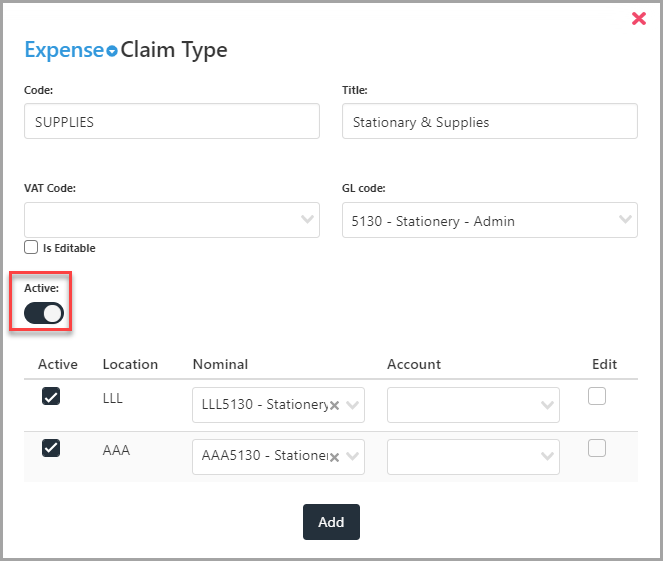
- Next, select Active adjacent to any listed locations to set whether the claim type is available for the specific location when submitting a claim.
- If the expense claim type is to be recorded against a location specific nominal, select the required option from the Nominal drop-down list.
- To set a default account to which the expense is posted for a specific location, select the required option from the Account drop-down list.
- Select Edit adjacent to the Account for a location, if another account can be selected when submitting a claim.
- select Add to save the details of the claim type.
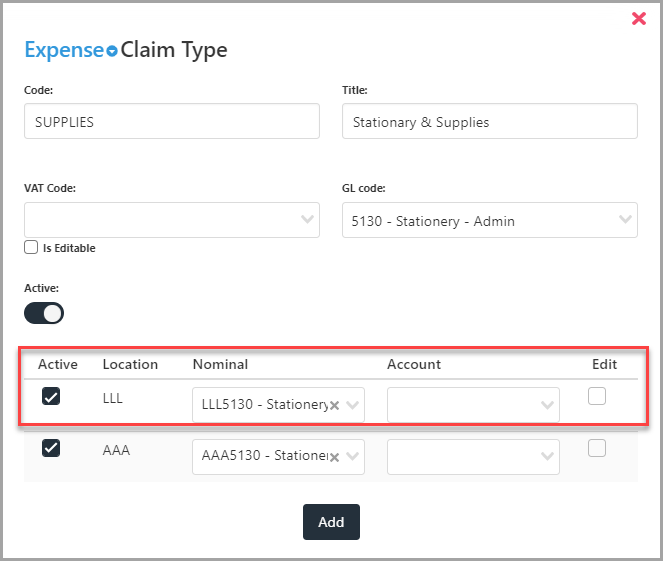
Creating a Mileage Claim Type
- In the Mileage Claim Type panel, enter the details for the claim type for the following:
Code - enter a reference to help identify the claim type (limited to 24 characters) e.g. MILEAGE.
Title - enter a title to help identify the claim type (limited to 24 characters) e.g. Mileage Claim.
Mileage Reset Date - select to select the required date on which you want the mileage threshold limit to reset. Alternatively, enter the date in DD/MM/YYYY format.
GL Code - select the expense nominal to which the type of claim is to be recorded against. - Active is switched on by default, which ensures the claim type is available for selection when entering the details of a claim. To hide the claim type from being selected, select Active to switch it off.

- If the mileage claim type is to be recorded against a location specific nominal, select the required option from the Nominal drop-down list.
- To set a default account to which the mileage is posted for a specific location, select the required option from the Account drop-down list.
- Select Edit adjacent to the Account for a location, if another account can be selected when submitting a claim.
-
select Add to save the details of the claim type.

Editing a Claim Type
You can edit existing claim types rather than having to add a new claim type. For example, you want to add additional locations that can select the claim type when submitting expenses or change the default VAT rate that was selected.
- In the Claim Types panel, select the claim you want to edit.
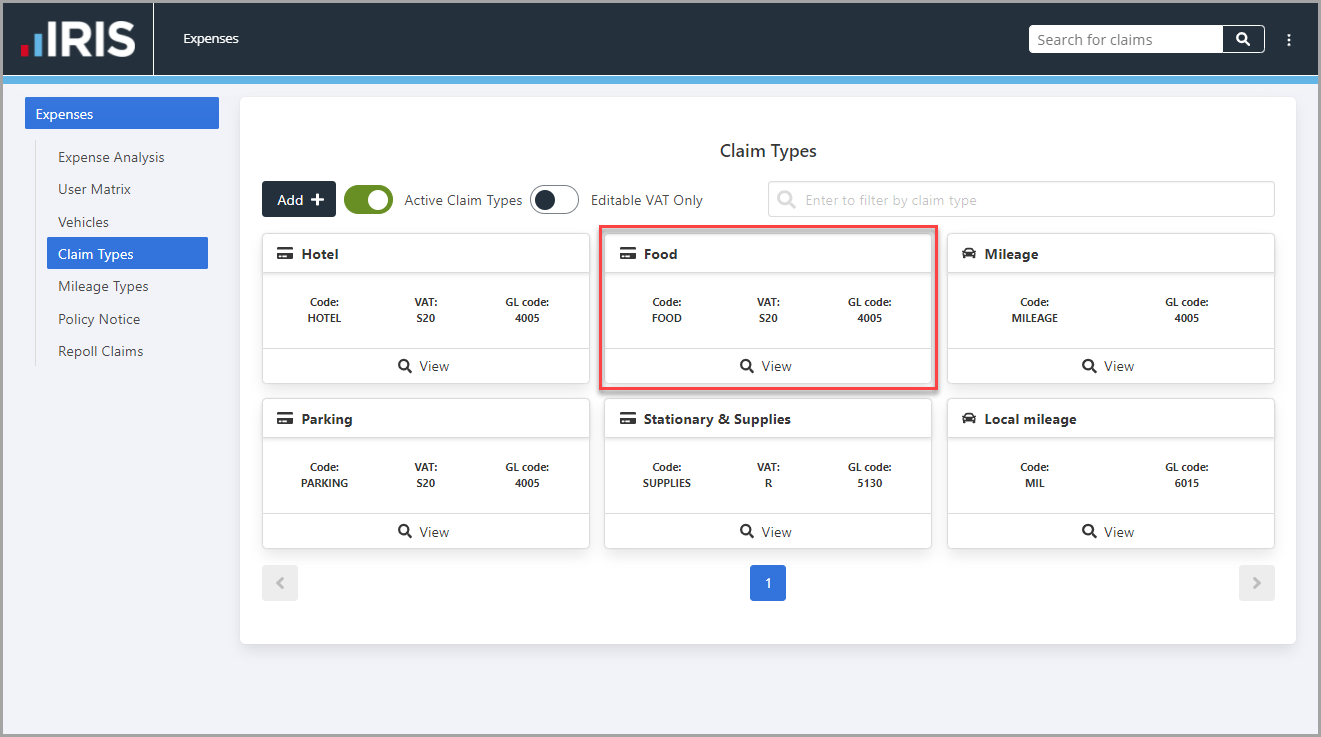
- The ExpenseClaim Type panel is displayed. select the Edit icon.
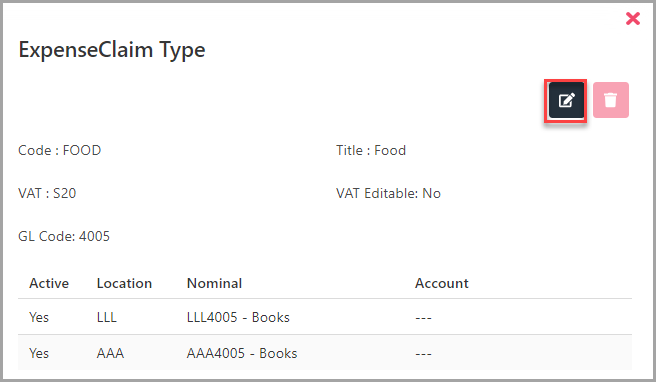
- Make the required amendments, then select Update to save your changes.

Searching for a Claim Type
To find a particular claim type, you can enter the code or title for a claim in search, or filter by active or editable VAT claim types.
- In the Claim Types panel, enter the code or title of the claim type in search or select one of the following options:
Active Claim Types - only displays claim types that are set as active.
Editable VAT Only - only displays claim types where IsEditablewas selected for the claim type.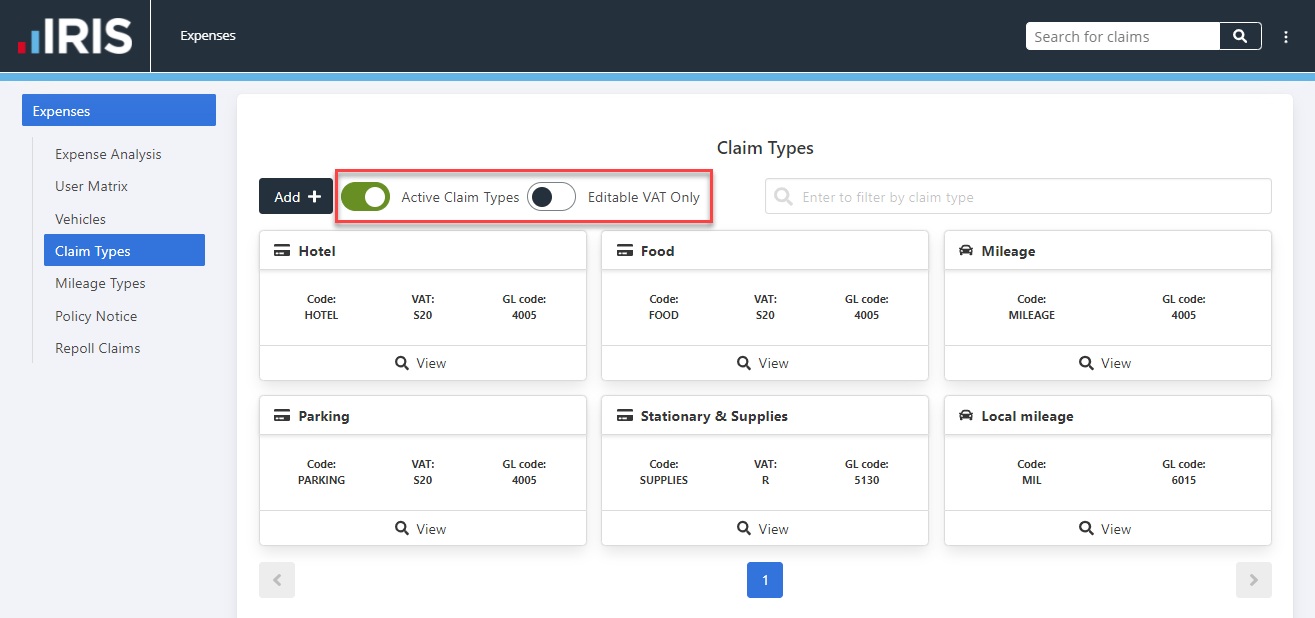
Hiding a Claim Type
If you do not want a claim type to be available for selection when entering expense details for a claim, you can hide the claim type so that it is not displayed in the claim types drop-down list when adding a claim.
- In the Claim Types panel, select the claim type you want to hide.
- The ExpenseClaim Type panel is displayed. select the Edit icon.

- select Active to switch it off, then select Update to save the changes.

Deleting a Claim Type
If you have accidentally created a claim type or want to remove a claim type you do not require, you can delete the claim type.
- In the Claim Types panel, select the claim type you want to delete.
- The ExpenseClaim Type panel is displayed. select the Delete icon.
If there are claims submitted against the claim type, the Delete icon is unavailable.
- The Delete claim type message is displayed. select Yes to confirm the removal of the claim type.
